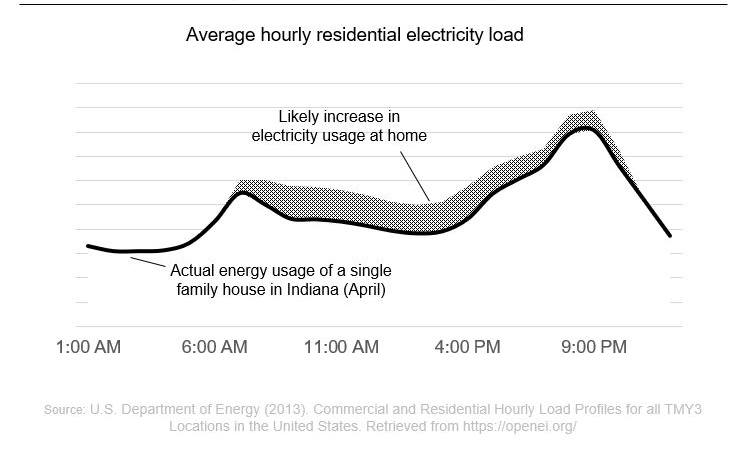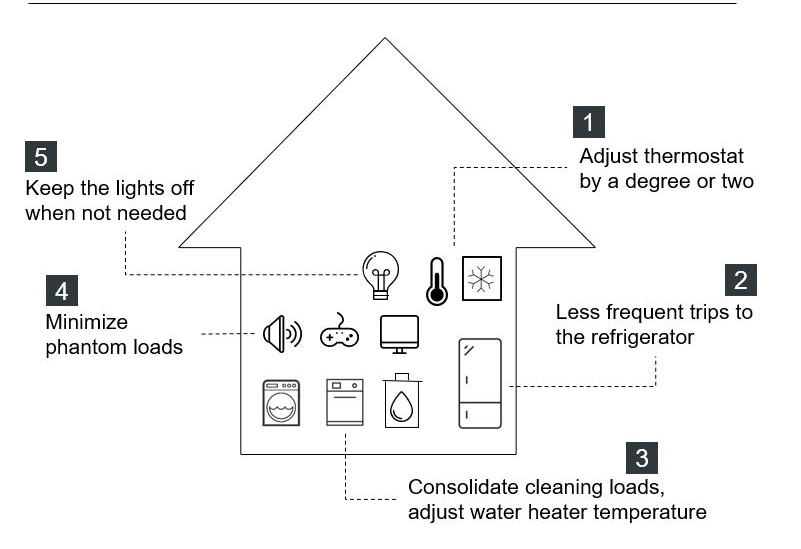Energy IQ: Five tips to manage your home’s energy use while staying at home
By Aytek Yuksel, Content Marketing Leader - Power Systems

COVID-19 continues to impact many aspects of our lives. Many are now required to stay at home in an effort to curb the spread of the pandemic. One of the many implications of staying at home will be the changes in your home's energy usage.
Historically, a family on average incurs $200 of energy bills a month in the United States. As many families around the world are required to stay at home, their home energy bills are expected to temporarily rise.
Below are five practical tips to reduce your home’s energy consumption, but before we get into these tips, let’s cover the basics around understanding your current energy use at home.
Understanding your current home energy use
Maintaining indoor temperatures, heating water, providing lighting and operating your refrigerator take up most of the energy used in homes. Many residential households rely on electricity and natural gas as the energy sources to power these and other amenities.

In recent decades, electricity has been the rising star in bringing energy to our homes. It kept gaining ground to first surpass the use of petroleum, and more recently to surpass the use of natural gas as the primary form of energy in households.
Beyond these aggregated trends, your home and family’s energy needs are unique, and you can check your local utility provider’s web site to understand your home’s energy usage.
Staying and working from home likely changes your energy use pattern
The amount and timing of energy we use throughout the day at home changes, let's call it your daily energy use pattern. Commonly, energy use in residential dwellings peaks in early evening as more of us return from work to home, get dinner ready, watch TV, and adjust the indoor temperate to a pleasant level. Energy use bottoms during night hours as heating or cooling tends to be the only energy user.

As many are required to stay at or work from home, this daily energy use pattern will likely change. It is expected the energy usage during daytime hours will increase considerably. This will be a result of more family members being present at home when they are normally at work or school. This will create the need for additional heating or cooling, more frequent use of hot water and increased appliance usage. The energy usage will likely increase during evening hours too, but a much less significant increase in comparison to the increase during day hours.
Five practical tips to manage energy use while you and your family are at home
- Heating and cooling tend to be the largest consumer of energy. If you need heating, consider lowering your thermostat by a degree or two to reduce your energy bills. Where applicable, you can keep your curtains or blinds open to take advantage of sunlight for heating. For the rooms not frequently used, you can consider adjusting air vents to decrease hot air flow into these rooms and close their doors. If you need cooling, consider raising the temperature by a degree or two and using fans to help circulate the air.

Five practical tips to manage your energy bills while staying at home. - Refrigerators tend to be the appliance that consume the most electricity. Consider challenging yourself and your family to not open the refrigerator door as frequently. As many are required to stay at home, this means more people making frequent trips to the refrigerator for food and snacks. Consider setting up a family challenge; tape a piece of paper on the fridge door and put a mark every time someone opens the door, award the family member that opened the door the least.
- Lighting continues to consume a considerable amount of energy in households, even after all the recent improvements in energy efficient lighting. Consider taping the switches in the off position for the rooms with minimal usage. This will help you and everyone in the home avoid leaving lights on during the day in selected rooms. If you are an early riser and like working in the morning while it is still dark outside, consider setting an alarm on your phone to turn off all lights after sunrise so you don't forget. If you have recently invested in smart home technology, consider setting schedules for your light fixtures to automatically turn off at preset times.
- Heating water for showers, the dishwasher and washing machine is another area that consumes a sizable amount of energy. Consider lowering the water heater temperature towards the lowest setting, and consolidating your washing loads to minimize the times the washing machine runs. Replicate the same with your dishwasher too.
- Many of your home electronics continue to use electricity while they are turned off or in standby mode, hence the phrase 'phantom loads'. Consider unplugging these devices while they are not in use. These devices include TVs, stereos, game consoles, cell phones, computers, computer accessories and beyond.
This is a very difficult time for everybody and the world is joining together to keep people healthy first and foremost. As many are required to stay at or work from home, we can all put an effort to manage our individual energy footprint.
Sign up below for Energy IQ to periodically receive relevant energy insights and trends from Cummins Inc. Think your friends and colleagues would like this content? Share on LinkedIn and Facebook.
Author Profiles

Aytek Yuksel, Content Marketing Leader - Power Systems
Aytek is a marketing leader at Cummins, focusing on technology and thought leadership. Since joining in 2008, he has held various marketing roles and now shares insights on markets, technologies, and energy transition. Aytek lives in Minneapolis with his wife and two kids.